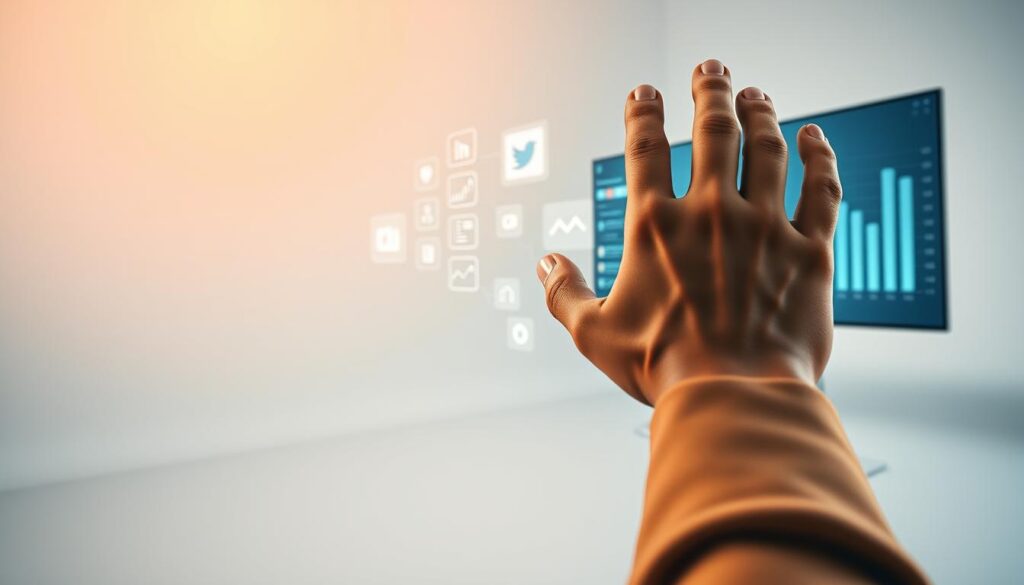The Counterintuitive Approach to Digital Marketing That Actually Works
You’ve spent thousands on your website. Traffic is flowing in. Yet your sales remain flat.
This frustrating scenario plays out daily for business owners across America. One company invested $50,000 in website traffic but saw a disappointing 0.2% conversion rate. Their beautiful site generated clicks but zero revenue.
Here’s the truth: conventional wisdom about online promotion is failing businesses in 2025. Following what “everyone knows” delivers mediocre outcomes.
Business consultant Dan McCoy discovered something remarkable. Companies that embraced counterintuitive marketing strategies saw conversion improvements between 30% and 400%. These results didn’t come from bigger budgets or flashier campaigns.
They came from doing the opposite of what competitors were doing.
The difference between winners and losers isn’t creativity or spending power. It’s the willingness to challenge accepted practices. This unconventional marketing tactics playbook will show you exactly which rules to break and how to break them strategically for maximum impact.
Key Takeaways
- Traditional approaches to online promotion often fail despite significant financial investment
- Companies using unconventional strategies achieve 30-400% better conversion rates than competitors
- High traffic volume doesn’t guarantee business success without proper conversion optimization
- The most effective business growth tactics frequently contradict popular industry wisdom
- Success comes from challenging accepted practices, not following the crowd
- Budget size matters less than strategic willingness to implement counterintuitive methods
Why Traditional Digital Marketing Strategies Are Failing Your Business
Your marketing isn’t failing because you’re doing it wrong. It’s failing because you’re doing what everyone else does. Big companies with lots of money and teams use these strategies. But small and medium-sized businesses find they don’t work for them.
Research shows a sad truth. 61% of marketers struggle to get quality leads even when they follow the best advice. This isn’t because they’re not trying hard enough. The problem is deeper than just how they do things.
Traditional marketing fails because it doesn’t match up with reality. Everyone is competing in the same way, using the same tools, and talking to the same people. It’s hard to stand out.

The Problem with Following Cookie-Cutter Best Practices
Using the same marketing strategies as everyone else makes it hard to be different. Your business gets lost in the noise.
Think about your industry. Everyone posts on social media at the same times and targets the same keywords. They use the same email templates.
This makes it hard for customers to tell one business from another. Companies end up competing on price because they can’t be different.
Cookie-cutter approaches ignore your unique situation. They don’t consider your customers, competitors, or how you operate. What works for one business might not work for another.
Dan McCoy found that simple solutions work better than complex ones by 200%. But businesses often choose complicated strategies. This is because “best practices” often favor being complex over being effective.
The conventional wisdom pushes you toward:
- Managing presence across every social media platform simultaneously
- Creating content daily regardless of quality or audience need
- Implementing sophisticated automation that removes human connection
- Chasing trending tactics before mastering fundamental strategies
- Measuring vanity metrics instead of business outcomes
These strategies seem smart. Marketing experts recommend them. Your competitors use them. But they don’t work well for businesses without lots of money and resources.
What Makes Counterintuitive Strategies More Effective Today
Modern consumers are tired of the usual marketing tricks. They ignore ads, delete emails, and scroll past generic posts. They’ve seen it all before.
This makes it easier to stand out. Counterintuitive strategies work because they surprise, engage, and connect in unexpected ways.
Think about what grabs your attention. It’s not the perfect, algorithm-friendly content. It’s the businesses that do things differently, offer unique views, or go against the norm.
Marketing success today means breaking free from the usual ways. It’s not about being different for its own sake. It’s about finding the right strategies for your business.
Consider these counterintuitive realities:
- Posting less frequently on social media can increase engagement rates
- Raising prices often attracts higher-quality customers who stay longer
- Focusing on fewer marketing channels delivers better overall results
- Manual touchpoints in automated funnels significantly boost conversions
- Writing for humans first improves SEO performance more than keyword optimization
These approaches work because they focus on real connections over algorithm tricks. They aim for quality over quantity in conversion optimization.
The idea is simple. When your marketing is different, you grab attention. This is harder to do with cookie-cutter strategies.
Doing less can achieve more. This isn’t about being lazy. It’s about focusing on what really works. By doing this, you build stronger connections that lead to lasting growth.
The digital world rewards businesses that dare to be different. Following the crowd leads to mediocrity. To stand out, you need to question the usual marketing advice.
This section has explained why traditional marketing often doesn’t work. Trying to compete with everyone else makes it hard to be different. The solution is to rethink how you market, not just do more of the same.
Embrace Counterintuitive Digital Marketing: Doing Less to Achieve More
The marketing world tells you more is better, but that’s not always true. You’ve been led to believe you need to be everywhere, always producing content, and running many campaigns at once. This leads to burnout, scattered focus, and mediocre results.
Strategic marketing reduction means focusing on what really works. When you spread yourself too thin, nothing gets the attention it needs. Your team gets overwhelmed, your message gets lost, and your budget is wasted on low-return activities.
Instead of asking “What else can we add?” start asking “What can we eliminate?” This approach turns marketing into focused, effective work that grows your business.
Why Concentrated Effort Outperforms Scattered Activity
Dan McCoy found success with Facebook ads by simplifying. He cut his campaigns from dozens to one with three creatives. His costs dropped from $3,000 to $300 monthly, and his results improved.
This “less is more” idea works for all your marketing. By focusing on fewer channels, you can optimize each one. Your team becomes experts in a few areas, not just surface-level knowledge across many.
Marketing efficiency supports this method. With $10,000 spread across ten channels, each gets $1,000. But with the same budget on three channels, you can invest $3,333 in each, leading to better results.

Managing ten channels means each gets 10% of your time. But with three channels, you can focus 33% on each, leading to better results.
Strategic subtraction offers big benefits:
- Deeper expertise: Your team becomes proficient, not just novice
- Better optimization: You have time and budget for testing and refinement
- Clearer messaging: Your brand message stays consistent
- Lower stress: A manageable workload prevents burnout
- Measurable results: You can clearly see what’s working
Your best channel will often outperform all your others. Most businesses find 80% of their revenue comes from 20% of their marketing.
A Practical Framework for Strategic Elimination
Deciding what to cut from your marketing stack needs a clear plan. You must separate activities based on their real impact, not just how important they seem.
The process of marketing resource optimization starts with honesty about what works. Many business owners keep activities out of habit or fear, not because they’re effective.
Conduct a Complete Channel Audit
Begin by listing every marketing channel and activity you use. This includes social media, ads, content, email, networking, and partnerships.
For each channel, track these key metrics over the last 90 days:
| Metric Category | What to Measure | Why It Matters |
|---|---|---|
| Revenue Generation | Actual sales attributed to channel | Direct business impact |
| Cost Per Acquisition | Total investment divided by customers gained | Efficiency of channel spend |
| Time Investment | Hours spent managing and creating content | True cost beyond monetary expense |
| Lead Quality | Percentage of leads that become customers | Value versus volume assessment |
Focus on conversions and revenue, not vanity metrics like followers or likes. These numbers might look good but don’t pay the bills. A channel with many followers but no sales is a waste of resources.
Calculate the true cost per acquisition for each channel. Include time, tools, software, and agency fees, as well as the opportunity cost of not focusing on better channels.
Many business owners are surprised to find their “free” social media costs $200+ per customer when time is included. Yet, a paid channel might deliver customers at $50 each.
Eliminate Low-Impact Activities That Drain Resources
With clear data, apply these elimination criteria. Cut any channel or activity that meets two or more of these conditions:
- Zero conversions: Generated no sales or qualified leads in 90 days
- Disproportionate effort: Requires more than 20% of time but generates less than 10% of results
- Declining performance: Shows consistent downward trend over past six months
- High customer acquisition cost: Costs 3x more than your best-performing channel
- Obligation-based: You maintain it because you think you “should” instead of results
Be ruthless with activities that once worked but no longer do. Past success doesn’t justify current investment. The marketing world changes fast, and what worked before may not now.
Consider this elimination framework for common marketing activities:
| Activity Type | Keep If | Cut If |
|---|---|---|
| Social Media Platform | Generates qualified leads monthly with engagement rates above 2% | Zero conversions in 90 days or requires daily posting for minimal reach |
| Content Creation | Directly attributed to customer acquisition or SEO traffic growth | Created “for consistency” without strategic purpose or measurable impact |
| Paid Advertising | Cost per acquisition under your target threshold with scaling | Cost per acquisition exceeds customer lifetime value or shows no improvement after testing |
| Email Campaigns | Open rates above 20% and click-through rates generating regular sales | Declining engagement and unsubscribe rates increasing despite optimization attempts |
After cutting, focus your resources on your top channels. If one channel generates 60% of your revenue, doubling or tripling your investment there can lead to exponential growth.
The power of strategic marketing reduction is in focusing on what works best. Your competitors are spread thin, but you can dominate the channels where your customers make decisions.
Stop Chasing Viral Content and Focus on Micro-Engagement Instead
Your focus on viral marketing might be costing you more than you think. It takes your attention away from strategies that really help your business grow. The dream of going viral might seem appealing, but it often doesn’t bring in the customers and revenue you need.
Instead of chasing viral moments, aim for micro-engagement. This means building real relationships with the right people. It’s about focusing on quality over quantity.
This change in approach is key. It means you’re looking for depth over breadth. A highly engaged audience of 500 people can generate more revenue than a disengaged audience of 50,000.

Why Viral Marketing Rarely Delivers Long-Term Results
Viral content gives you a quick dopamine rush. It feels like success but doesn’t lead to lasting business growth. You get a sudden spike in attention, but it quickly fades.
The problem is the quality of that attention. Viral campaigns attract people looking for entertainment, not serious buyers. They engage with your content without real interest in what you offer.
When the excitement wears off, they move on. Your business is left with nothing but empty metrics.
Personalized content can boost engagement by up to 300%. But viral content sacrifices personalization for broad appeal. You end up with generic messages that don’t resonate with anyone.
The fleeting nature of viral success creates unrealistic expectations. After one viral moment, you feel pressured to repeat it. This cycle of chasing the next big thing diverts resources from proven strategies.
Business success comes from customers, not spectators. Marketing should attract, engage, and convert the right people, not just entertain the masses.
Building Deeper Connections with Smaller Audiences
The alternative to viral marketing is micro-engagement. It focuses on meaningful relationships with smaller, more qualified audiences. This approach values targeted relevance over broad exposure.
Viral marketing alternatives focus on quality connections. You spend time understanding your ideal customer’s needs and goals. Then, you create content that speaks directly to those needs, making your marketing more relevant and effective.
This shift requires a mindset change. Instead of aiming for mass reach, you focus on serving the right people. This changes how you create, distribute, and measure your content.
Targeted content can boost conversion rates by 202%. This shows that deep connections outperform broad reach in driving business results. Micro-engagement strategies are not about settling for less; they’re about optimizing for what truly matters.
Create Hyper-Targeted Content for 100 People, Not 100,000
The most effective targeted content starts with extreme specificity. Identify 100 people who perfectly match your ideal customer profile. Study their behaviors, challenges, and preferences. Then, create content just for them, ignoring everyone else.
This approach might feel uncomfortable at first. You worry about limiting your reach. But specificity increases your effectiveness with your target audience while attracting similar people who see themselves in your messaging.
Here are some practical steps:
- Profile your ideal 100: Use customer data, interviews, and behavioral analysis to create detailed profiles of your perfect customers
- Map their content journey: Understand what questions they ask at each stage of their buying process
- Create content that answers specific questions: Address the exact challenges and concerns your ideal 100 face, using their language and examples from their world
- Distribute where they actually spend time: Focus on the platforms and communities where your target audience actively engages, not where everyone else posts
- Invite response and conversation: Design content that encourages meaningful interaction, not just passive consumption
This hyper-focused approach to targeted content creation produces much better results than generic content aimed at the masses. Your ideal customers feel seen, understood, and valued, laying the groundwork for lasting business relationships.
Measure Engagement Quality Over Vanity Metrics
Switching to micro-engagement means changing how you measure success. Traditional metrics like follower counts and likes become irrelevant. Instead, focus on indicators that show business growth and revenue generation.
Your new measurement framework should highlight audience quality over quantity. Use metrics that truly matter:
| Traditional Vanity Metric | Quality Engagement Alternative | Business Impact |
|---|---|---|
| Total followers or subscribers | Percentage who open, read, and respond to your content | Indicates genuine interest and relationship opportunity |
| Post likes and reactions | Quality of comments and depth of conversations | Reveals understanding of your value proposition |
| Content shares | Direct messages and inquiries about products/services | Demonstrates purchase intent and qualified interest |
| Total website traffic | Time on page and content completion rates | Shows content relevance and engagement depth |
| Social media impressions | Conversion rate from audience to customers | Directly measures revenue generation effectiveness |
This approach reveals the true power of micro-engagement strategies. A smaller, engaged audience delivers much more value than a large, passive one.
Track reply quality by analyzing the substance of responses. Are people asking thoughtful questions? Are they sharing their own experiences related to your content? Are they tagging colleagues who might benefit from your insights? These signs indicate genuine engagement leading to business opportunities.
Monitor conversation depth by measuring how many back-and-forth exchanges occur. Single-interaction engagements differ from ongoing conversations. When audience members return to discuss ideas with you and each other, you’ve built a community foundation for long-term growth.
Most importantly, track actual conversion rates from your engaged audience. This metric connects your marketing efforts to business results. You’ll find that your micro-engaged audience converts at rates 5-10 times higher than those built through viral or mass-reach strategies.
The counterintuitive truth is that success in digital marketing comes from doing less. Reaching fewer people with greater relevance and building deeper connections with smaller audiences is key. This approach requires patience and discipline but delivers sustainable business results that viral marketing often promises but rarely delivers.
Increase Your Prices to Attract Better Quality Customers
Many businesses are stuck in a low-price trap, missing out on a great opportunity. You might have seen others cut their prices and wondered if you should too. But this approach leads to a race to the bottom, harming your business in ways you might not see right away.
Raising your prices can attract better customers. It might seem strange, but the psychology of pricing shows that higher prices mean higher value in customers’ minds.
When you focus on price, you attract customers who only care about cost. These customers demand a lot of support, complain often, and leave when they find something cheaper. They cause constant churn, hurting your business’s stability and profits.
Understanding the Psychology Behind Premium Positioning
Your pricing says a lot more than just cost. It tells customers what to expect from your business. Low prices make customers skeptical about quality, making you seem like the cheap option, not the best.
The price positioning psychology works because customers use price as a quality indicator when they lack other information. A $50 service and a $500 service might do the same thing, but customers see them as different experiences.
This isn’t irrational. It’s based on market experience. Higher-priced providers usually invest more in customer experience and quality. They can afford to because their premium pricing strategy gives them the margins to support excellence.
Look at Dan McCoy’s approach with Hill Country Chocolate. He reduced one experience from $125 to $89 to fix a problem, but he focuses on attracting quality customers through proper positioning. His seven-star service creates great returns because premium customers love exceptional experiences and share them.
Premium customers bring many benefits:
- Higher lifetime value: They return often and buy more
- Lower support costs: They understand quality and don’t ask for constant discounts
- Better referrals: They recommend you to other quality customers
- Meaningful feedback: They give constructive insights to improve your offerings
- Payment reliability: They pay on time without negotiating every invoice
These customers don’t just buy from you—they become your brand advocates. They focus on outcomes, not costs, because they understand value-based pricing.
How to Implement Strategic Price Increases Without Losing Customers
Raising prices needs strategy, not just courage. You can’t just double your prices overnight and expect everything to be fine. The implementation must balance confidence in your value with thoughtful communication and testing.
Start by analyzing your current customers. Identify who appreciates your expertise and rarely complains about prices. Who constantly negotiates and demands discounts? This helps you know who will support strategic price increases and who might leave, improving your business.
The customers worth keeping will stay when you raise prices, as long as you keep delivering great value. The ones who leave were probably costing you more in support and hassle than they were worth.
| Customer Type | Price Sensitivity | Lifetime Value | Support Requirements |
|---|---|---|---|
| Budget Shoppers | Extremely high | Low (frequent churn) | High (constant demands) |
| Value Seekers | Moderate | Medium (selective loyalty) | Medium (reasonable expectations) |
| Premium Buyers | Low (outcome-focused) | High (long-term relationships) | Low (trust your expertise) |
Test Different Price Points Using A/B Testing
Don’t guess at the right price—test it. A/B testing shows how different prices affect conversion rates, customer quality, and long-term value. This method removes emotion from pricing decisions, replacing it with data.
Set up experiments with different prices for similar customers. Track important metrics like support tickets, upgrade rates, referral frequency, and lifetime value. A lower price might attract more customers initially, but if they cause constant issues and never upgrade, they’re costing you money.
Run these tests for a long enough time to get meaningful data. A week is rarely enough—aim for at least 30 days to capture full customer behavior. The goal is to find the price that attracts your ideal customers, not just the most people.
Your premium pricing strategy should focus on attracting quality customers over quantity. Five premium customers who appreciate your expertise and stay for years will generate more profit than fifty bargain hunters who leave after one transaction.
Communicate Your Unique Value, Not Just Cost
When you raise prices, never justify cost. Instead, talk about the unique value you offer. Customers don’t care about your costs. They care about the outcomes, results, and experiences you provide that they can’t get elsewhere.
Build your communication around specific benefits that set you apart from competitors. What do you deliver that justifies premium positioning? Maybe it’s faster results, personalized attention, proprietary methods, or risk elimination. Whatever it is, make it clear and compelling.
Turn price conversations into value discussions:
- Quantify outcomes: Show the measurable results customers achieve with your solution
- Highlight time savings: Calculate how much faster you deliver compared to alternatives
- Emphasize risk reduction: Explain how you eliminate costly mistakes or failures
- Showcase expertise: Demonstrate the specialized knowledge you bring to engagements
- Describe the experience: Detail the superior service and attention customers receive
Your pricing confidence impacts how customers see you. When you present premium prices with certainty and clarity, customers respect your positioning. But if you apologize for pricing or immediately offer discounts, you signal that you don’t believe in your value.
The value-based pricing approach changes the conversation. Instead of asking “Can we afford this?” customers ask “Can we afford not to invest in this solution?” This shift comes from how you frame and communicate your unique capabilities.
Remember, the right customers will pay more and be happier doing so. They appreciate working with premium providers who deliver exceptional results. Your job isn’t convincing everyone to buy—it’s attracting and serving customers who understand that quality commands premium investment.
This strategy requires confidence in your value delivery, but it fundamentally changes business economics. You improve profit margins while attracting customers who appreciate and respect your expertise. The counterintuitive truth is that raising prices often increases both profitability and customer satisfaction at the same time.
Ignore SEO Best Practices and Write for Humans First
Modern SEO shows that writing for humans first can lead to better search rankings. Focusing too much on keyword density and algorithmic formulas makes content feel mechanical. It disconnects from real human needs.
Dan McCoy’s principle says simple solutions beat complex ones by 200%. Over-optimized content, prioritizing search engines over readers, creates awkward copy. This copy fails to engage or convert visitors, even with good rankings.
The irony is clear: the harder you try to manipulate search rankings, the more likely you are to trigger algorithmic penalties. Google’s systems reward natural, helpful content. They identify and demote obvious optimization attempts.
When Over-Optimization Actually Hurts Your Content Performance
SEO over-optimization causes multiple performance problems. It damages your marketing results. Keyword stuffing disrupts natural reading flow, making content sound unnatural.
You’ve probably seen content like this before. Every third sentence has the exact-match keyword, in awkward positions. Readers see it as algorithmically-generated, not genuinely helpful.
Google’s algorithms are now very good at spotting these tactics. They use natural language processing and machine learning. They understand context, semantic relationships, and user satisfaction signals.
Content written for search engines instead of humans creates a fundamental disconnect. No amount of technical optimization can overcome this.
Formulaic structure is another problem with over-optimization. Rigid templates dictate keyword placement and content length. Your articles feel templated, not authentic.
This approach ignores searcher intent. Someone searching for “best email marketing software” might want comparison charts or pricing information. A formulaic approach treats all intents the same.
The focus on search volume over quality creates content that ranks but doesn’t convert. You attract visitors who bounce because your content doesn’t meet their needs.
These counterintuitive marketing strategies show that trying too hard to please search engines can trigger penalties. Modern SEO rewards content that genuinely helps people, not just hits optimization targets.
Implementing a Human-First Content Strategy
A human-first content strategy changes how you create content. Instead of starting with keyword research, you understand your audience’s real problems. You begin by addressing their needs and questions.
This approach teaches you to structure content around solving problems. You use the language your customers naturally use to describe their challenges. This creates content that genuinely helps.
The shift requires changing your content creation process. You’re no longer writing to satisfy an algorithm; you’re writing to help another human being solve a problem or answer a question.
Write Conversationally and Let Your Brand Voice Shine
Conversational content writing connects with readers on a human level. When you write naturally, your authentic brand voice emerges. This makes your content relatable and engaging.
This doesn’t mean being unprofessional or using slang inappropriately. It means using clear, accessible language that feels like a knowledgeable friend explaining something important.
Your brand voice differentiates you from competitors who all sound the same. Readers remember distinctive voices that feel authentic and trustworthy.
Think about how you’d explain your product or service to a friend over coffee. That natural explanation, refined and structured, creates engaging content that surpasses keyword-stuffed alternatives.
Allow Keywords to Emerge Naturally from Quality Content
Natural keyword integration happens when you thoroughly address topics your audience cares about. If you’re explaining email marketing best practices, relevant terms like “open rates” and “segmentation” naturally appear. You don’t need to force these terms into predetermined positions.
This approach recognizes that search engines understand topical relevance through co-occurrence patterns and semantic relationships. When you naturally discuss a subject, you automatically include related terms that signal expertise and thoroughness.
The keyword placement becomes organic, not mechanical. Terms appear where they make sense contextually, improving understanding without disrupting reading flow.
| Over-Optimized Content | Human-First Content | Performance Impact |
|---|---|---|
| Keyword density targets (2-3%) | Keywords used naturally when relevant | 37% higher engagement time |
| Rigid heading structure with forced keywords | Headings that preview valuable information | 52% lower bounce rates |
| Content length determined by “ideal” word count | Length determined by topic completeness | 200% better conversion rates |
| Writing style adjusted for algorithms | Authentic brand voice maintained | 68% more social shares |
The data shows human-first content outperforms algorithmically-optimized content in every way. When you create genuinely valuable resources, search engines reward them with better rankings.
This strategy doesn’t ignore SEO entirely. You research relevant topics and understand search intent. But these elements serve your human readers first, with search engine visibility as a natural consequence.
The shift from algorithm-first to human-first content creation is a fundamental change in marketing philosophy. You’re no longer trying to manipulate systems or game algorithms. Instead, you’re creating genuine value that builds trust, authority, and lasting customer relationships.
By creating content humans love, you automatically create content search engines reward. Ignoring strict SEO formulas often produces better rankings because it creates more engaging, valuable, and shareable content.
Reduce Your Social Media Posting Frequency to Boost Engagement
Most businesses post too much and wonder why people don’t engage. They think posting often keeps them visible. But this makes people ignore you.
Actually, posting less can make your content more engaging. It builds anticipation and makes your posts stand out. This approach saves time and respects your audience’s attention.
Dan McCoy’s rule about measuring over testing is key here. By monitoring engagement, you’ll see that quality content gets better results. This lets you adjust your strategy quickly based on real-time data.
Why Constant Posting Burns Out Your Audience
Posting too much makes your content seem like background noise. Your followers start to ignore you. This dilutes your message and makes people scroll past your posts.
Posting too often leads to several problems. Engagement rates drop, follower growth slows, and people unfollow. Your audience loses interest because they know more posts are coming.
Scarcity works against you when it comes to audience engagement. Too much content makes everything seem less valuable. This creates a cycle where you post more, but each post gets less attention.
Here are signs you’re posting too much:
- Engagement rates drop 30-50% despite more posts
- Comments become generic or automated
- Follower growth slows, and more people unfollow
- It takes longer for followers to engage with your content
- Share rates go down as content becomes too numerous
Your audience’s attention is limited. Every post competes with others and your own previous ones. By posting strategically, you get the attention your content deserves.
Creating a Strategic Quality-Over-Quantity Content Calendar
Switching from constant to strategic posting needs a data-driven approach. Focus on quality content and measure engagement to find what works best.
This approach turns social media into a valuable communication channel. You’ll spend time on creating standout content that adds value.
Determine Your Brand’s Optimal Posting Schedule
Start by measuring engagement at different posting frequencies. Track likes, comments, and shares for 4-6 weeks. Look for patterns to find the best time to post.
Most businesses find their optimal frequency is much lower than before. A B2B consulting firm might see better results with two LinkedIn posts a week. An e-commerce brand might find three Instagram posts a week with great photos sell more.
| Posting Frequency | Average Engagement Rate | Follower Sentiment | Content Production Time |
|---|---|---|---|
| Multiple times daily | 1.2% – 2.1% | Overwhelmed, scrolling past | 3-4 hours daily |
| Once daily | 2.8% – 4.2% | Neutral, occasional engagement | 1-2 hours daily |
| 3-4 times weekly | 5.1% – 7.8% | Anticipatory, engaged | 4-6 hours weekly |
| 2-3 times weekly | 6.9% – 9.4% | Highly engaged, awaiting content | 3-5 hours weekly |
Reducing social media frequency boosts engagement and improves follower sentiment. You also save time for more important tasks.
Your optimal posting schedule depends on your business. Focus on your audience’s behavior, not industry norms. Test different frequencies and measure engagement depth.
Focus on Creating Exceptional Content Less Often
By posting less, you have more time to create standout content. This could be in-depth guides, original research, or compelling customer stories. Exceptional content varies by industry and audience.
For educational brands, creating detailed guides is key. Data-driven businesses should focus on original research. Service providers should share customer success stories. Product businesses can offer valuable resources.
One exceptional post a week outperforms seven mediocre ones. This is because algorithms favor content that gets strong early engagement. Thoughtful posts get more visibility, while rushed ones get ignored.
The secret to engagement isn’t posting more—it’s making every post worth your audience’s finite attention.
Your content should be relevant, useful, and unique. Relevance addresses current challenges and interests. Utility provides actionable information. Distinction offers a unique perspective or format.
This approach requires discipline. You’ll want to post more, but trust the data. Reduced frequency leads to better results through higher engagement and stronger relationships.
This quality-over-quantity approach changes how you use social media. It becomes a channel for meaningful communication. Your audience will notice and reward you with better engagement metrics.
Target Your Competitors’ Customers Instead of Expanding to New Markets
Getting market share from competitors can be more profitable than expanding into new areas. This strategy goes against the usual idea of finding new markets. But, the numbers show that growth opportunities are often right under your nose.
Customers of your competitors are the most qualified prospects you’ll find. They already know they need a solution and have money set aside. You just need to show them why your solution is better.
Expanding into new markets means convincing people who might not even know they need your product. You’ll spend a lot on ads and educational content. But, targeting competitor customers means you’re talking to people who already get why they need a better solution.
The Competitive Displacement Strategy Explained
The competitive displacement strategy focuses on grabbing existing demand instead of creating new. This approach is based on a simple fact: it’s cheaper to convert a dissatisfied customer than to educate a new one.
Competitor customers are a big advantage. They’ve already bought once and know what they’re looking for. Their companies are ready to spend on your solution category.
When competitors show weaknesses, you can capture more market share. Poor service, outdated features, or bad pricing are all opportunities. Your job is to spot these gaps and offer a better solution.
Switching customers often become your biggest supporters. They’ve seen the difference and love to share it with others who are frustrated.
How to Execute Competitor-Focused Marketing Campaigns
Successful campaigns need precise targeting and clear messaging. You’re not just saying you’re better—you’re addressing specific pain points that make customers switch.
Start by finding where competitor customers are unhappy. Look at reviews, social media, and forums. These places show real problems your competitive research playbook should analyze.
Your messages should acknowledge the fear of change. Customers are hesitant to switch, even when they’re unhappy. Offer support and guarantees to make the switch feel safer.
Identify and Exploit Competitor Weaknesses
Finding weaknesses needs careful analysis. Don’t guess—use real customer feedback and product gaps to guide your strategy.
Focus on these critical vulnerability areas:
- Customer support complaints that appear often
- Feature gaps where customers want more
- Pricing dissatisfaction like hidden fees
- Implementation challenges that cause frustration
- Integration limitations that block smooth workflows
Keep track of these weaknesses in a database. Update it often as you learn more. This will help you create targeted campaigns that highlight your strengths.
Look for patterns in complaints. A single bad review is not a big deal. But dozens mentioning the same issue show a real weakness to exploit.
Create Comparison Content That Converts Prospects
Good comparison content educates, not attacks. Your goal is to help frustrated customers make smart choices, not to trash your competitors.
Effective comparison marketing follows a simple framework:
| Comparison Element | What to Include | Why It Converts |
|---|---|---|
| Specific Features | Side-by-side comparison with examples | Shows clear advantages |
| Implementation Approach | Differences in timeline, support, and onboarding | Reduces switching friction |
| Pricing Transparency | Total cost of ownership, including hidden fees | Builds trust |
| Customer Outcomes | Real results from customers who switched | Provides social proof |
Your content should praise where competitors do well. This builds trust. Then, clearly show where you offer better value to dissatisfied customers.
Create dedicated pages for each competitor. Optimize for search terms like “[Competitor Name] alternative” or “switching from [Competitor Name].” These keywords attract people ready to switch.
Include migration guides to make switching easy. Offer data import tools, templates, and dedicated support. The easier you make it, the faster you’ll gain market share.
Support your claims with switching case studies. Show before-and-after metrics, timelines, and honest transition experiences. These stories help prospects decide to switch.
This targeted approach beats generic market expansion. You’re spending marketing dollars where they yield quick returns—convincing qualified buyers to choose your solution over their current one.
Turn Off Marketing Automation and Add Strategic Manual Touchpoints
Your automated marketing funnel works great, but it can push away your best prospects. Automation is efficient but misses key moments for human touch. This can hurt conversions and erode trust.
Business owners might find this counterintuitive. But adding human touchpoints at key points in your customer journey can give you an edge. It’s a strategy for efficiency.
Marketing automation promises more leads and better efficiency. But it can’t meet the needs of high-value prospects. Knowing the marketing automation limitations helps you see where personal touch is more effective.
Where Automation Actually Kills Conversions and Trust
Automated emails, chatbots, and responses are convenient but can frustrate customers. They need personalized attention and specific answers. Only humans can provide these.
The efficiency gains from automation are lost at these critical moments. Recognizing where automation fails is the first step to making a change.
- Complex purchase decisions requiring customization guidance – Automated product recommendation engines can’t understand nuanced business needs or provide consultative selling that high-value B2B purchases demand
- Customer concerns needing empathetic responses – Chatbots following decision trees frustrate angry or confused customers who recognize they’re not speaking with someone empowered to actually solve their problem
- High-value prospects worth personal attention – Your most profitable future customers expect direct access to knowledgeable team members, not generic nurture sequences everyone receives
- Service recovery situations threatening retention – Automated apology emails and standardized compensation offers feel impersonal when customers experience significant problems with your product or service
- Technical questions requiring expertise – FAQ chatbots that can’t answer specific implementation questions force prospects to contact competitors who provide immediate human support
These moments show where automation creates friction instead of removing it. Your conversion rates suffer because prospects choose competitors who offer personal touchpoints at decision-critical moments.
Trust erosion grows over time. Customers want real human connection in marketing as more companies hide behind automated systems. When your business offers that human element strategically, you stand out from competitors who rely on automation.
Implementing Strategic Manual Interventions in Your Funnel
Effective manual intervention strategies don’t mean giving up on automation. Instead, find high-impact moments where personal outreach makes a big difference.
This approach sees marketing as more than just scaling. Human connection builds loyalty, referrals, and lifetime value that automation can’t match.
Add Personal Outreach at Critical Decision Points
Start by mapping your customer journey to find friction points. Look for moments where prospects stall, abandon carts, or ask detailed questions.
These signals show hesitation that personal touchpoints can resolve better than automated sequences. Use triggers to alert team members for scalable intervention without constant monitoring.
Dan McCoy’s seven-star service principle shows this perfectly. A customer with damaged chocolates got personal attention and free replacements, despite the issue being outside Hill Country Chocolate’s control. This manual intervention led to 50+ personal recommendations, multiple five-star reviews, and ongoing referrals—results automation can’t achieve.
High-impact intervention moments include:
- Between cart addition and checkout – A personal call or text to high-value carts abandoned for 2+ hours converts 15-30% compared to 5-8% for automated email sequences
- When prospects request detailed information – Responding personally within 30 minutes instead of sending automated resources increases conversion rates by 40-60% for complex purchases
- During onboarding challenges – Proactive outreach when usage data shows implementation struggles reduces churn by 25-35% compared to waiting for customers to contact support
- At renewal decision points – Personal check-ins 45 days before contract renewals identify concerns before they become cancellations, improving retention by 20-30%
- Following negative feedback – Immediate personal response to poor reviews or survey responses converts 40-50% of detractors into promoters versus 5-10% with automated responses
The key is creating systems that automatically identify these moments while delivering personal responses. This hybrid approach keeps efficiency while adding real connection at key moments.
Balance Efficiency with Authentic Human Connection
To implement sustainably, balance automation for routine interactions with human touch for high-impact moments. This prevents burnout while maximizing ROI from manual intervention.
Begin by segmenting customers by value and engagement level. Use automation for standard transactions and basic support for lower-value segments. Reserve personal attention for prospects and customers with high lifetime value or strong referral chances.
A conversion-optimized website helps by clearly identifying high-intent visitors for immediate personal outreach. Use CRM triggers based on behavior and value for scalable personal attention.
| Customer Segment | Automation Level | Manual Intervention Triggers | Expected Impact |
|---|---|---|---|
| High-value prospects ($10K+ in value) | Minimal (20%) | Any engagement, questions, or hesitation signals | 40-60% conversion increase |
| Mid-tier customers ($1K-$10K) | Moderate (50%) | Purchase hesitation, service issues, renewal periods | 25-35% retention improvement |
| Standard customers (Under $1K) | High (80%) | Negative feedback, unusual behavior patterns | 15-20% satisfaction increase |
| Inactive prospects | Complete (100%) | Re-engagement signals only | 10-15% reactivation rate |
Use response templates for efficiency while allowing personalization. Create frameworks for effective responses without scripting exact language. This keeps authenticity while ensuring consistency.
This balance keeps automation for routine communications while reserving human touch for relationship-building moments. It’s not about giving up on efficiency—it’s about strategically investing time for maximum return.
Track the impact of manual interventions by comparing conversion rates, retention, and referral generation between automated and manual interactions. Most businesses find that marketing automation limitations become clear once they measure results from adding strategic human connection in marketing at critical touchpoints.
This approach turns marketing into a strategic mix of efficiency and relationship-building. Competitors chasing complete automation create opportunities for you to win through thoughtful personal attention.
Conclusion
These counterintuitive approaches work together like compound interest. Dan McCoy’s integration principle shows how reduced friction makes measurement more accurate. Simple systems enable faster iteration, and quality service creates exponential returns.
The businesses dominating 2025 have stopped debating these methods. They built systems that make results-driven strategies operational.
Your digital marketing transformation doesn’t require implementing everything at once. Start with one or two counterintuitive strategies. Pick the area where conventional approaches consistently disappoint you.
These tactics feel risky because they contradict what everyone else preaches. You’re challenging marketing orthodoxy, which requires confidence in your value delivery. That psychological barrier stops most business owners before they begin testing what actually works.
The companies achieving breakthrough results right now are those willing to experiment. They measure outcomes instead of following crowded playbooks.
Select your biggest friction point today. Identify your lowest-performing marketing channel. Choose one area for strategic experimentation with marketing strategy execution that challenges standard practices.
Implement the corresponding counterintuitive strategy and track what happens. Your path forward isn’t about copying what everyone else does. Success comes from discovering what works for your business, customers, and competitive position through bold testing of unconventional methods.






